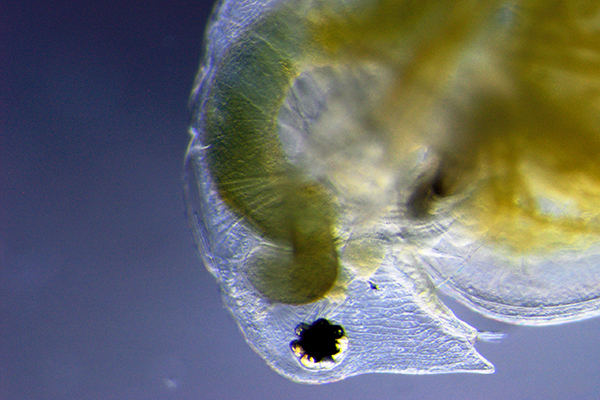
Full Text:
Can environmental toxins disrupt circadian rhythms -- the biological clock whose disturbance is linked to chronic inflammation and a host of human disorders? Research showing a link between circadian disruption and plankton that have adapted to road salt pollution puts the question squarely on the table.
The research builds on recent findings from the Jefferson Project at Lake George, showing that a common species of zooplankton, Daphnia pulex (shown here), can evolve tolerance to moderate levels of road salt in as little as two and a half months. That research produced five populations of Daphnia adapted to salt concentrations ranging from the current concentration of 15 milligrams-per-liter of chloride in Lake George to concentrations of 1,000 milligrams-per-liter, as found in highly contaminated lakes in North America.Image credit: Brian Mattes/Rensselaer Polytechnic Institute